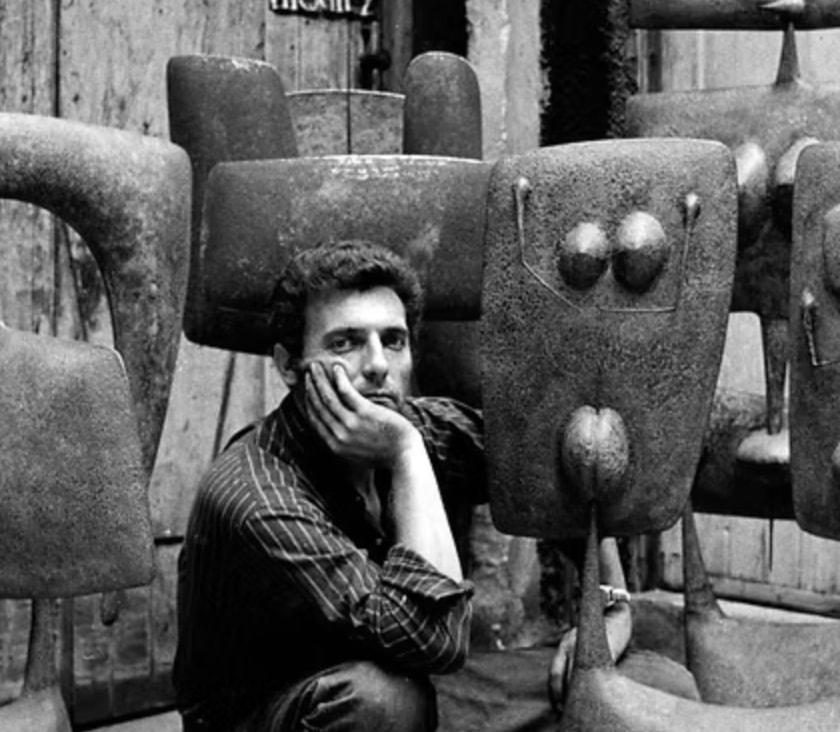
Philippe HIQUILY
Born in Paris in 1925, Hiquily grew up in a scholarly atmosphere in his early age, which led to an interest in ancient culture, particularly Hellenistic. On his return after a two-years stay in Indochina in the late 1940s, the young man entered at the École des Beaux-Arts in Paris, where he studied sculpture with Janniot and Gimond. Awarded of the sculpture prize there in 1953, Hiquily’s work associates quite quickly two main ideas: he became familiar with the technique of welded metals, which was prized by César, and he chose to draw inspiration from Cycladic shapes for his sculptures, which play on volumes with curves and counter-curves. This last stylistic aspect is supported by the use of welds to assemble curved metal plates, a technique also used in Ancient Greece.
The 1950s was a decade of Experimentation, as the artist sought to define his own artistic identity. During this period, he worked in the studio of Germaine Richier, for whom he created specific bases for his sculptures. The use of large flat surfaces arranged in space led him to study the work of Alexander Calder, who will be one of his closest friends. The mobile reinvents his vision, all the more so when it is motorised, with an existence of its own. The exhibition at The Contemporaries Gallery in New York in 1959 opened the door to international renown: he sold all the pieces exhibited and became friends with Noguchi, Rauschenberg, Man Ray and Marcel Duchamp. Jeux de H was acquired by the Guggenheim Museum on this occasion.


